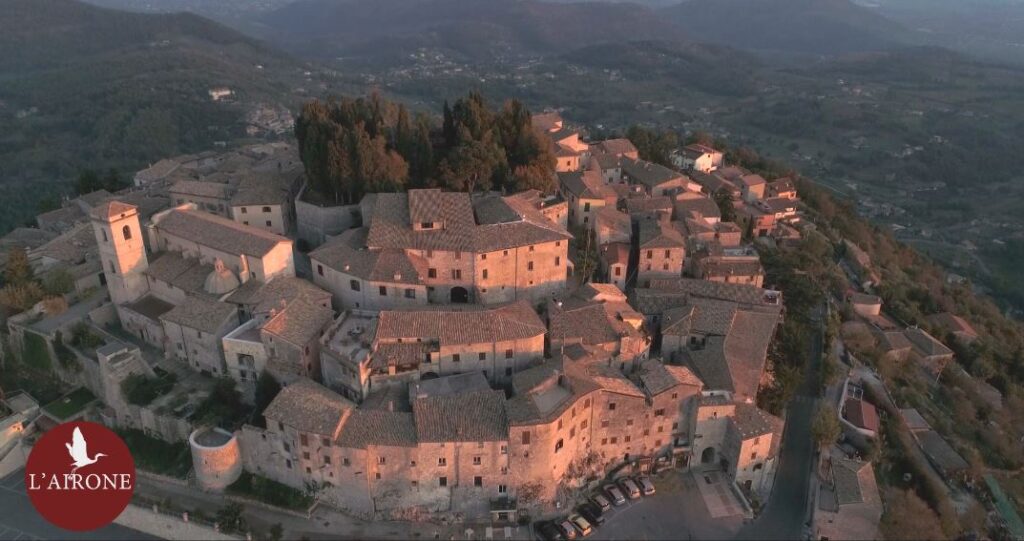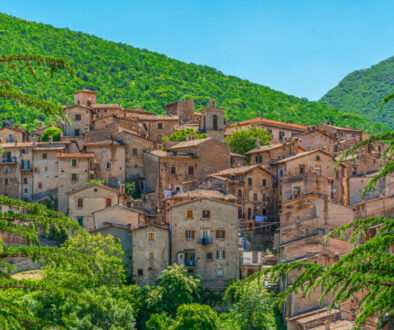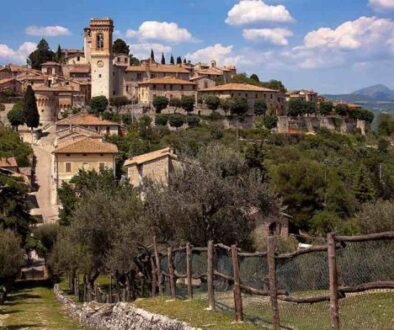An hour and a quarter from Rome to visit the castle with its ghosts
The completely isolated position of Monte Fumone, the perfect preservation of medieval structures and, above all the buildings, the castle with the hanging garden, make Fumone a center of severe fascination. Located at 800 meters above sea level, a true anti-warship towards the south since the Popes of the Middle Ages had to fear the raids of the Saracens coming from the banks of the Garigliano, or those of the Longobards from the Duchy of Benevento and the Normans of the Principality of Salerno and of Capua. This is the Castrum, the ancient impregnable fortress with the Arx or “Fortissima Turri” in the center, as it was mentioned in the Middle Ages.
Arriving at the top of the mountain, you can reach the city center through two gates: the Porta Romana in the direction of Rome, which in the past was the only access to the fortress, and the Porta Napoletana, which was an emergency exit. The enormous column of smoke that rose above the high tower of Castel Fumone was taken up and transmitted by Rocca di Cave, Castel S. Pietro di Palestrina and Paliano, and as far as the towers of the Urbe, warning Rome of imminent danger. The Castrum Fumonis was the highest Castellania of the Church in the lower part of Lazio, submitted to the authority of the Pope. From the existing historical documentation, it appears as the first feudatory of the Fortress a Leo de Fumonis in 1111. In 1118 Maurice Bourdin was imprisoned in Fumone, as a prisoner of state, a French monk who became Bishop of Coimbra and then Archbishop of Braga in Portugal. He died there in 1124 and whose body was never found again. In 1155 the castle was besieged in vain by Federico Barbarossa, and in 1186 Fumone was the only fortress that managed to resist the devastating work of Henry VI, the founder of the Swabian dynasty in Sicily. The prestige of the Rocca was a motive for autonomous and possession of the barons and the accounts to which it was entrusted, and this required numerous interventions by the popes Innocent III, Honorius III and Gregory IX to restore the submission of the Castle of Fumone. In 1295, escorted by six knights and thirty men of arms, Pope Celestino V was imprisoned in the fortress of Fumone, at the behest of the new Pope Boniface VIII. The mild character, author of the “great refusal”, died there after about ten months of imprisonment. In 1584 Giovanni Longhi, a Roman patrician, bought and began the transformation of the ancient and austere Rocca. The heirs completed the restoration and embellishment with the construction of a monumental roof garden of 3500 square meters, located above the fortress. The garden, attached to the main house, is one of the rare examples of its kind in Europe, and is typical of the classic Italian garden art. For its extension it is considered the largest in Europe among those that are at an altitude of over 800 meters above sea level, and the most precious thing that offers visitors is the magnificent panorama that offers the whole of Ciociaria. The view extends from the Colli Albani to the distant chain of the Aurunci Mountains, in Campania; from the peaks of the Simbruini and Ernici mountains to the Lepini Mountains, and around 45 surrounding villages dominate.






The Castle is the main attraction of the small village of Fumone, famous for being one of the great places of mystery in Italy as well as a manor with a long history, which over time has also had important ‘guests’.
The history of the castle of Fumone is inextricably linked to that of Pope Celestine V: once abdicated, the new pope Boniface VIII took him prisoner right inside this castle, where Celestino died less than a year later. It seems that, at the moment of his death, a flashing cross appeared in the room, an event that has always been known to have been miraculous. It is not only the story of the Pope that gives an aura of mystery to the castle: famous is also the story of the little Marquis Francesco Longhi, found dead without ever having been found guilty or guilty. A mystery therefore remained unsolved, and that gave birth to many legends around the castle; someone is also convinced to hear crying and complaints during the night near the castle. Even today the body of the marquisino is embalmed and kept in the archive of the castle.
The visit of the castle of Fumone takes about forty minutes, and leads through its most significant places, among which stand out the beautiful hanging gardens overlooking the countryside around the village. The assassination of the marquisino XIX century: Francesco Longhi is the eighth son of a family of marquises and being the only male, since the other seven sons are all women, will inherit the entire heritage. The sisters, however, decided not to lose the legacy, they ordered an evil plan to get rid of the little brother. The plan consisted of gradually killing the child with no signs, no traces, no evidence that they had been: they put shredded glass into his food. After a short time the child began to suffer from terrible pain, bleeding and eventually died at the age of five. After the death of her mother, who believed her son had died of pneumonia, one of the sisters confessed the crime. The parents, destroyed by the pain, ordered the embalming and the dead marquis was covered with wax and placed in a glass case. To this day during the guided tours, the embalmed body is exposed to the vision.
The ghosts of mother and son in the fortress of Fumone
It seems that mother and son, or rather their spirits, are still in the castle of Fumone. Emilia Caetani Longhi, the mother of the marquisino who never knew the truth about the death of her son, would have been seen wandering around the casket and her voice would be heard singing a lullaby. The woman destroyed by pain would be unable to leave the manor. But even the marquisino would wander through the castle: some particular shots have recorded the voice of a child and objects moving in the playroom
rometours365 recommends a break for lunch in a medieval style restaurant near the castle. Typical medieval cuisine: TAVERNA DEL BARONE: https://www.tripadvisor.it/Restaurant_Review-g2291823-d3239470-Reviews-Taverna_del_Barone-Fumone_Province_of_Frosinone_Lazio.html


